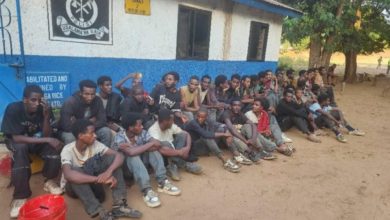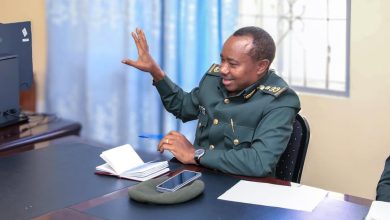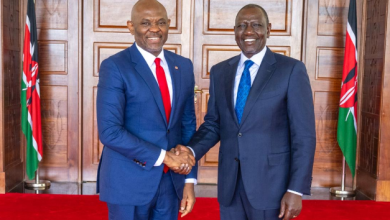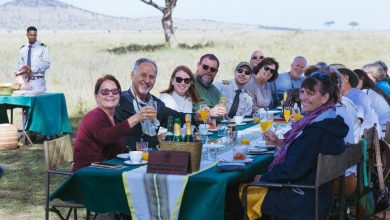Mikindani: Where ancient Africa meets untapped opportunity

MTWARA: “ MIKINDANI is one of the ancient towns along the East African coast and we are talking about a place that existed long before the arrival of foreigners, this is history dating back to over 200 years before Christ…, during the time of African societies before colonialism.”
This is how Lucas Navilongo, the Training Manager at the Old Boma Training Hotel in the historic town of Mikindani, began his conversation with me as he narrated the rich past of this old settlement.
Mr Navilongo further explained that Mikindani gained prominence earlier than Mtwara town, making it one of the earliest developed areas in the region.
“Back then, the town was known as Kimbuli or Chimbuli. This was during the time of indigenous tribes who lived nomadic lifestyles.
We are referring to people from Mozambique who belonged to the Chimbuli clan. They settled in Mikindani many years ago and the town got its name from this well-known clan, which helped establish the town’s identity,” he said.
The Origin of the Name
“Mikindani” Mr Navilongo says that as the Chimbuli community engaged in farming, fishing, carving and salt production, they were visited by traders from Asia, mainly Arabs and Indians, who came to the area for commerce.
According to stories passed down by elders, there are several theories about the origin of the name Mikindani, though only one has stood the test of time. He shares the first theory: “The name may have come from a misunderstanding between the locals and foreign traders.
When asked where the land was while out at sea, the locals supposedly responded, ‘The land is inside,’ which in Swahili is ‘Nchi iko ndani.’ Over time, with language evolution and adaptation, this phrase is believed to have transformed into Mikindani.
However, this theory didn’t gain much traction.” He added another theory: “In coastal areas, girls and women were not allowed to go outside. Locals used the phrase mtu ndani (meaning ‘the person is inside’) to refer to this. Some say this may have influenced the name Mikindani. But again, it didn’t hold much weight historically.”
The most accepted theory, Mr Navilongo explains, is related to Arab influence and the cultivation of coconut palms.
“Between the 8th and 14th centuries, when the Arabs began settling and building here also engaging in the slave trade coconut farming became widespread.
The small coconut palms were called mikinda. When people referred to the place where these palms were grown, they said ‘we’re going to Mikindani’ (meaning ‘the place of small palms’). This theory gained historical credibility and replaced the name Chimbuli, which eventually faded from use.”
The arrival of David Livingstone and the end of the Southern slave trade
“During the 14th century, Arabs were active here in the slave trade and coconut farming. Later, with European expansion, we began to see the early stages of colonialism. Mikindani then became known for receiving visitors beyond the Arab traders,” says Navilongo.
“Explorers like Dr David Livingstone arrived in Mikindani in the 1850s and 60s. He camped here while planning to trace the source of the Nile River.
But upon discovering the ongoing slave trade, he stayed longer, wrote letters to England and submitted reports about the situation.”
This part of the history is also confirmed by Brighton Kawiche, the Lead Conservator of Old Town Mikindani, who notes that, recognising Livingstone’s contributions, the UK-based volunteer organisation Trade Aid established the Livingstone Museum in Mikindani.
“He arrived in 1866 during his exploration. He helped end the slave trade in the south by buying and freeing some slaves, then writing to his country.
His actions helped pressure for the abolition of the slave trade in Mikindani and across the southern region.” The museum also showcases the cultural heritage of the local tribes.
Foreign presence in Mikindani
Navilongo said that after Livingstone’s time, European colonisation began across Africa. When the Germans took control of Tanganyika, starting from Bagamoyo and later Dar es Salaam, they eventually expanded southward. Mikindani became their administrative hub in the south.
They built the Old Boma on a strategic hilltop facing the ocean to monitor the port and enhance security. He explained that the Germans used the building for governance, security and meetings.
“You can even see the tower they used to watch the sea. Any enemy approaching Mikindani via the sea could be spotted from there.”
It was also a venue for official meetings and planning, after which everyone would return to their respective duties.
A hidden chapter
Navilongo shares a lesser-known story about the German Boma. It was discovered when a relative of a German who once lived and was buried in Mikindani came searching for his grave.
“The original building, started in 1890 at the dawn of colonial rule in East Africa, collapsed. The Germans rebuilt it in 1895. They didn’t document the failure extensively because it was seen as an embarrassment.”
He continues, “We learned this from an elderly German man (I’ve forgotten his name) who lived here during construction and was involved in farming. In 2024, his grandchildren came with his books, searching for his grave. The man had written about the original Boma and many activities in Mikindani.”
The visitors explored Mikindani and believe they found the site where their ancestor was buried. They left with plans to return for further research, following proper procedures and permits to confirm and possibly recover his remains.
This story will continue in next Monday’s edition.





